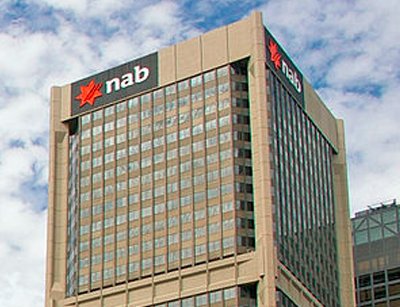The National Australia Bank - one of the founding members of the Open Data Center Alliance’s (ODCA’s) steering committee - released a paper detailing work undertaken in the design of its new data center which ensures the company can retain its 100% carbon-neutral status, first achieved in September 2010.
It said since taking the pledge to be carbon neutral back in 2007, it developed and delivered programs that have reduced its business-as-usual emissions by more than 25% (the equivalent of 59,200 tonnes of carbon). A new data center being built in Australia, however, has posed new challenges for the bank wanting to maintain its status.
In the whitepaper, published by the ODCA for members, the NAB said back in the initial stages of reducing the use of carbon, the “NAB’s technology department contributed significantly to the effort”.
The new data center will increase the efforts IT plays in the bank’s efficiency drive. It will allow the bank to undertake a massive consolidation project, moving its data center operations to a greener facility that will be ready for testing in July 2013.
The NAB currently operates two data centers in Melbourne. It partnered with Digital Realty Trust and IBM to design its new data center, and once launched this will replace its oldest facility.
Eventually, the new data center will also host systems currently housed in 30 smaller facilities – or computer rooms – across the country.
Overall, the NAB will consolidate more than 2,000 servers by the time the full migration is complete in September 2014.
“IBM is now responsible for the hardware within NAB’s two existing data centers, and for implementing IBM’s Infrastructure on Demand platform model,” the paper by NAB said.
“IBM is slated to build out the new data center in the same manner, and will manage the migration of existing functionality into the new facility.”
According to IBM NAB senior manager for Data Center Transformation Tim Palmer, the model allows the bank to react with demand, which will lead to more efficient use of the Bank’s IT resources.
“NAB is now purchasing ‘resource units’ from IBM, scaling functionality up or down as per demand. In the former model, data centers consume a lot more electricity and physical space than is necessary, and require IT staff to manage and maintain a higher number of servers than required,” Palmer said.
“The new model allows NAB to reduce its carbon footprint to a level of support that matches actual customer demand and service expectations.”
Back in February, the bank signed a long-term data center lease for 5,000 sq m of space in Digital Realty’s new Melbourne facility, which at that stage had just broken ground.
The NAB predicts that its new data center will have a Power Usage Effectiveness (PUE) rating of 1.35, which is “a very significant reduction from the 2.1 PUE for NAB’s current data center”.
It said it is relying heavily on virtualization technology for this, with 90% of its servers being virtualized across the company by the time the data center goes live.
It is also moving its facilities on to the gas-fuelled tri-generation system built at the data center site.
The bank said this not only reduces its reliance of coal-generated electricity but transmission losses by eliminating the distance the electrical feed needs to travel.
“The supply of high-temperature heat first powers a generator, which in turn produces low-temperature waste heat that is suitable for both heating and cooling data centers,” the NAB said.
“NAB’s tri-generation facility is an on-site, natural gas-driven generator that supplies one of NAB’s existing strategic data centers with over 60% of its total energy requirements. Tri-generation reduces carbon emissions by approximately 20,000 tons per year, and accounts for a 10% reduction in NAB’s overall Australian carbon footprint.”
NAB Group executive for the Group Business Services unit Gavin Slater said: “We face challenges to our goal of reducing energy use, in particular from our data centers, as energy consumption from these operations continues to grow to meet increasing demand for data processing capability.”
The NAB hopes this paper released through the ODCA will be used as reference for other companies looking to transform their data center environment with carbon reductions in mind.
One of the ODCA’s published usage models covers Carbon Footprint for services delivered through the Cloud.
Corresponding with the release of the NAB whitepaper, which can be accessed from the ODCA site, it released new interoperability-focused usage models looking at Platform-as-a-Service and Software-as-a-Service which detail expectations for market delivery of services.

